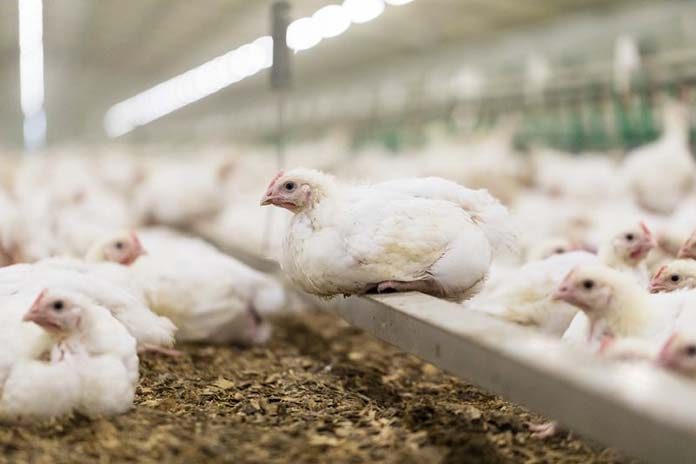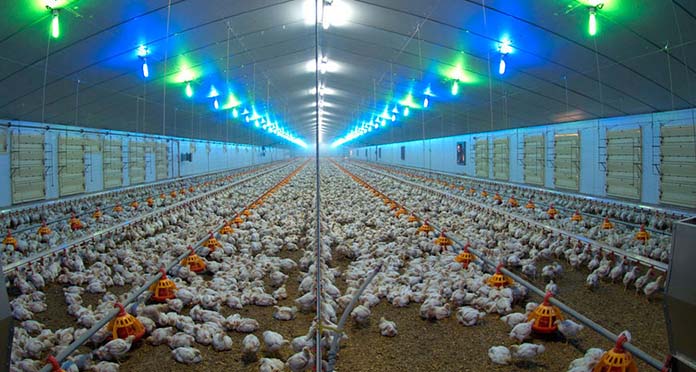
There has been a growing interest in the relationship between light intensity and welfare for commercial broiler chickens. A choice approach was employed to determine whether there is a preference of Cobb 700 broiler chickens for light intensity. It was hypothesized that chickens would show a clear preference for light intensity. The test system consisted of 3 pens (0.91×1.23 m) each with waterers and a feeder.
The pens were linked by a corridor with doorways to each pen. The corridor (0.31×3.66m) did not have either waterers or feeders. There were 11 systems with the pens illuminated to 5 or 10 or 20 lx. The corridor was illuminated at 1 lx. From placement 30 straight run Cobb 700 chickens were reared in the system and lighting treatments began on d14. Numbers of chickens in the pens and corridor were discerned by remote video every 15 min during the first and last hour of the photophase as well as one random hour during the photophase on d14, d21, d30, d35 and d40. In addition, feed intake was measured between these ages.
Overall, there were 22% more (P<0.05) chickens in the 20 lx pens than 5 lx pens with the number intermediate in the 10 lx pens. Moreover, at d 14 and 21, there were 36 and 26% more (P<0.05) chickens in 20 lx pens randomly through the day and 70 and 81% more (P<0.05) birds in the 20 lx pens in the last hour of the photophase.

At d 14, there were 3.1 Å} (n=11) 0.56 chickens per square meter in the corridor, despite the lack of feeders or waterers, compared with 7.0 Å} (11) 0.77 SEM birds per square meter in the 5 lx pens and 8.8 Å} (11) 0.86 birds per square meter in the 20 lx pens.
The number birds per square meter increased with age (P=0.000295) (slope=0.106 number per day). At d 40, the number of birds per unit area were similar in the pens irrespective of light intensity and also in the corridor.
Overall, there was less (P<0.006) feed consumed in in 5 lx than 10 or 20 lx. It is concluded that Cobb 700 chickens exhibit some preference for 20 lx light intensity for those times of feeding (the first and last hour of the photophase). Moreover, with increasing age/size, there are increasing numbers of chickens in the corridor. This may reflect preference for lower stocking densities and/or birds migrating away from feeders/waterers toward low light intensities.
















